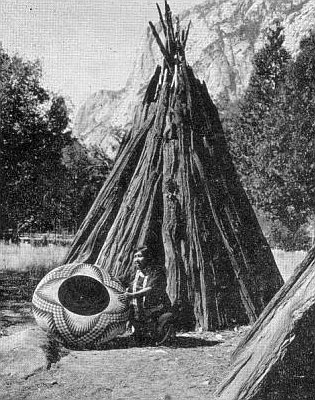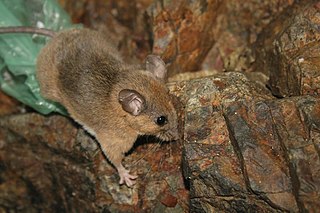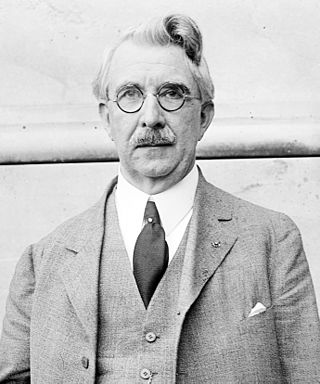Related Research Articles

Chilaquiles are a traditional Mexican breakfast dish consisting of corn tortillas cut into quarters and lightly fried.

The Mixtecs, or Mixtecos, are indigenous Mesoamerican peoples of Mexico inhabiting the region known as La Mixteca of Oaxaca and Puebla as well as La Montaña Region and Costa Chica Regions of the state of Guerrero. The Mixtec culture was the main Mixtec civilization, which lasted from around 1500 BC until being conquered by the Spanish in 1523.

John Reed Swanton was an American anthropologist, folklorist, and linguist who worked with Native American peoples throughout the United States. Swanton achieved recognition in the fields of ethnology and ethnohistory. He is particularly noted for his work with indigenous peoples of the Southeast and Pacific Northwest.

A double reed is a type of reed used to produce sound in various wind instruments. In contrast with a single reed instrument, where the instrument is played by channeling air against one piece of cane which vibrates against the mouthpiece and creates a sound, a double reed features two pieces of cane vibrating against each other. This means, for instruments with the double reed fully exposed, that the air flow can be controlled by the embouchure from the top, bottom and sides of the reed. The term double reeds can also refer collectively to the class of instruments which use double reeds.

Wicker is the oldest furniture making method known to history, dating as far back as 5,000 years ago. It was first documented in ancient Egypt using pliable plant material, but in modern times it is made from any pliable, easily woven material. The word wicker or "wisker" is believed to be of Scandinavian origin: vika, which means "to fold" in Swedish, and vicker meaning willow. Wicker is traditionally made of material of plant origin, such as willow, rattan, reed, and bamboo, but synthetic fibers are now also used. Wicker is light yet sturdy, making it suitable for items that will be moved often like porch and patio furniture. Rushwork and wickerwork are terms used in England. A typical braiding pattern is called Wiener Geflecht, Viennese Braiding, as it was invented in 18th century Vienna and later most prominently used with the Thonet coffeehouse chair.

Oryzomys nelsoni is an extinct rodent of María Madre Island, Nayarit, Mexico. Within the genus Oryzomys of the family Cricetidae, it may have been most closely related to the mainland species O. albiventer. Since its first description in 1898, most authors have regarded it as a distinct species, but it has also been classified as a mere subspecies of the marsh rice rat (O. palustris).

Basket weaving is the process of weaving or sewing pliable materials into three-dimensional artifacts, such as baskets, mats, mesh bags or even furniture. Craftspeople and artists specialized in making baskets may be known as basket makers and basket weavers. Basket weaving is also a rural craft.

"Illegal Alien" is a song by English rock band Genesis. It was written by members Tony Banks, Phil Collins, and Mike Rutherford, produced by all three alongside Hugh Padgham, and released as the third single from their self-titled 1983 album in January 1984. The song's lyrics, inspired by the band's troubles with getting visas to reenter the United States while on tour, tell the satirical story of an Illegal immigrant facing obstacles in the process of trying to move to the US. Its accompanying music video depicts the members of Genesis as a group of Mexican men unsuccessfully attempting to get their passports approved, and shows them in ponchos and sombreros.

Salmon Ruins is an ancient Chacoan and Pueblo site located in the northwest corner of New Mexico, USA. Salmon was constructed by migrants from Chaco Canyon around 1090 CE, with 275 to 300 original rooms spread across three stories, an elevated tower kiva in its central portion, and a great kiva in its plaza. Subsequent use by local Middle San Juan people resulted in extensive modifications to the original building, with the reuse of hundreds of rooms, division of many of the original large, Chacoan rooms into smaller rooms, and emplacement of more than 20 small kivas into pueblo rooms and plaza areas. The site was occupied by ancient Ancestral Puebloans until the 1280s, when much of the site was destroyed by fire and abandoned. The pueblo is situated on the north bank of the San Juan River, just to the west of the modern town of Bloomfield, New Mexico, and about 45 miles (72 km) north of Pueblo Bonito in Chaco Canyon. The site was built on the first alluvial terrace above the San Juan River floodplain.

The División del Norte was an armed faction formed by Francisco I. Madero and initially led by General José González Salas following Madero's call to arms at the outbreak of the Mexican Revolution in 1910. González Salas served in Francisco I. Madero's cabinet as Minister of War, but at the outbreak of the 1912 rebellion by Pascual Orozco, González Salas organized 6,000 troops of the Federal Army at Torreón. Orozquista forces surprised González Salas at the First Battle of Rellano. They sent an explosives packed train hurtling toward the Federales, killing at least 60 and injuring González Salas. Mutinous troops killed one of his commanders and after seeing the officer's body, González Salas committed suicide.

The Tres Marías island mouse or Tres Marías deer mouse is a species of rodent in the family Cricetidae. It is found only on the Islas Marías off the west coast of Mexico. When last assessed, it was common on María Cleofás Island, but rare or absent on the other, more disturbed, islands.

Glossophaga is a genus of bats in the leaf-nosed bat family, Phyllostomidae. Members of the genus are native to the American Neotropics.

Stuart Felix Reed was an American lawyer and Republican politician who became the Secretary of State of West Virginia (1909–1917) and represented West Virginia's 3rd congressional district in the United States House of Representatives (1917–1925).

The Beach Hotel was a seasonal resort in Galveston, Texas. Designed by architect Nicholas J. Clayton, it was built in 1882 at a price of US$260,000 to cater to vacationers. Owned by William H. Sinclair, the hotel opened on July 4, 1883, and was destroyed by a mysterious fire in 1898.

Cengage Group is an American educational content, technology, and services company for the higher education, K-12, professional, and library markets. It operates in more than 20 countries around the world.
The GWR 378 Class was a class of 30 standard-gauge 2-2-2 steam locomotives on the Great Western Railway in Britain. They were introduced in 1866, and the class remained intact until 1898. Several were altered to the 0-6-0 wheel arrangement, and the last was withdrawn from service in 1920.

Lulu is a collaboration album between rock singer-songwriter Lou Reed and heavy metal band Metallica. It was released as a double album on October 31, 2011, by Warner Bros. in the U.S. and Vertigo elsewhere. The album is the final full-length studio recording project that Reed was involved in before his death in October 2013. It was recorded in San Rafael, California, during April to June 2011, after Reed had played with Metallica at the Rock and Roll Hall of Fame's 25th Anniversary Concert which led to them wanting to collaborate. The lead single, titled "The View", was released on September 27, 2011.

The National Pyrotechnic Festival, which takes place in Mexico, is an annual event to promote the country's tradition of production and use of fireworks. It began as celebration in honor of John of God, the patron saint of fireworks makers, in the municipality of Tultepec, State of Mexico, which produces about three quarters of all Mexico’s fireworks. The main event, a parade of "toritos" or bull-shaped frames with fireworks on them, began in the mid 19th century. The modern national festival began in 1989 and includes various events including fireworks competitions, but the main event remains that of the toritos, with about 250 "running" along the streets of Tultepec in 2013.
Patrick Nathaniel Reed is an American professional golfer. He has nine tournament victories on the PGA Tour, including one major championship, the 2018 Masters Tournament, and two World Golf Championships, the 2014 WGC-Cadillac Championship and 2020 WGC-Mexico Championship. In 2022, he joined LIV Golf.

Elizabeth Anne Holmes is an American former biotechnology entrepreneur who, in 2022, was convicted of fraud in connection to her blood-testing company, Theranos. The company's valuation soared after it claimed to have revolutionized blood testing by developing methods that needed only very small volumes of blood, such as from a fingerprick. In 2015, Forbes had named Holmes the youngest and wealthiest self-made female billionaire in the United States on the basis of a $9-billion valuation of her company. In the following year, as revelations of potential fraud about Theranos's claims began to surface, Forbes revised its estimate of Holmes's net worth to zero, and Fortune named her in its feature article on "The World's 19 Most Disappointing Leaders".
References
- Saville, M. H.; S. Habel (September 1898). "The Musical Bow in Ancient Mexico". American Anthropologist. 11 (9): 280–284. doi: 10.1525/aa.1898.11.9.02a00030 . JSTOR 658759.